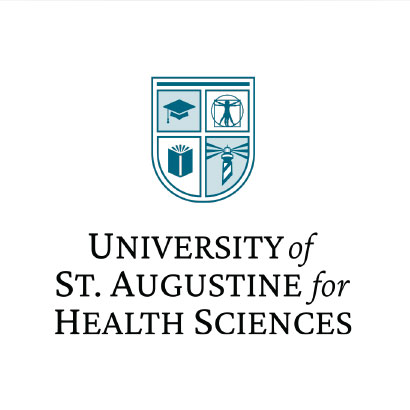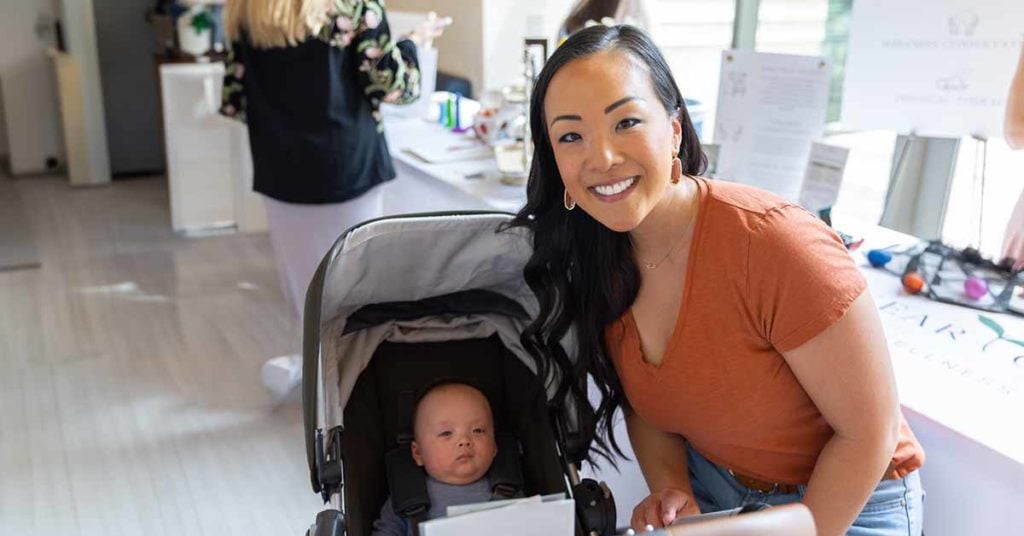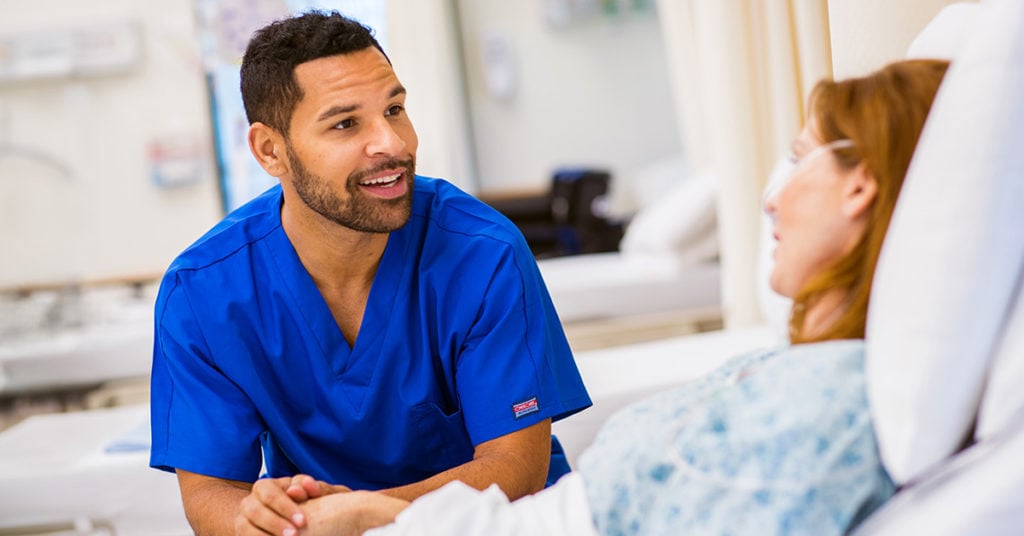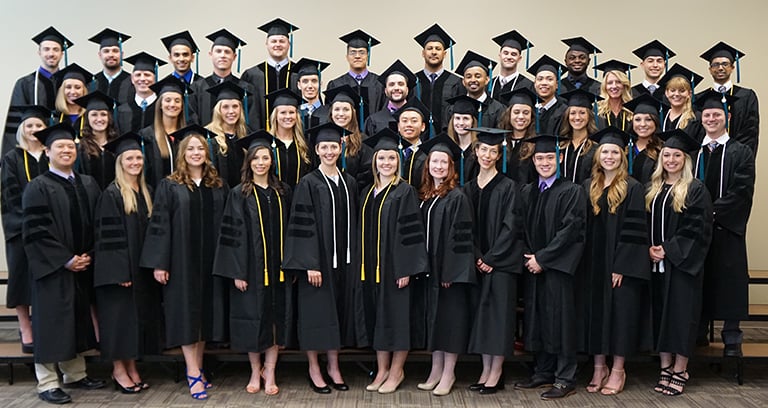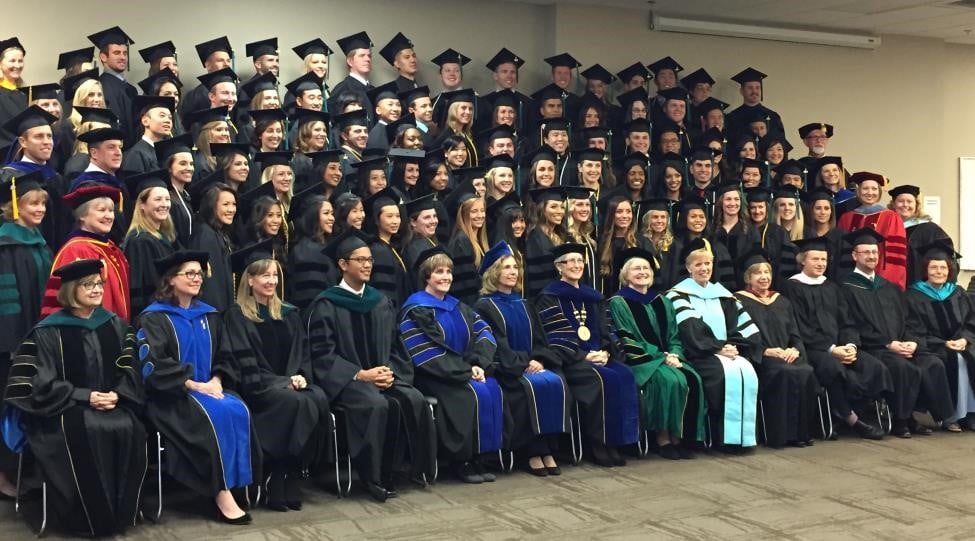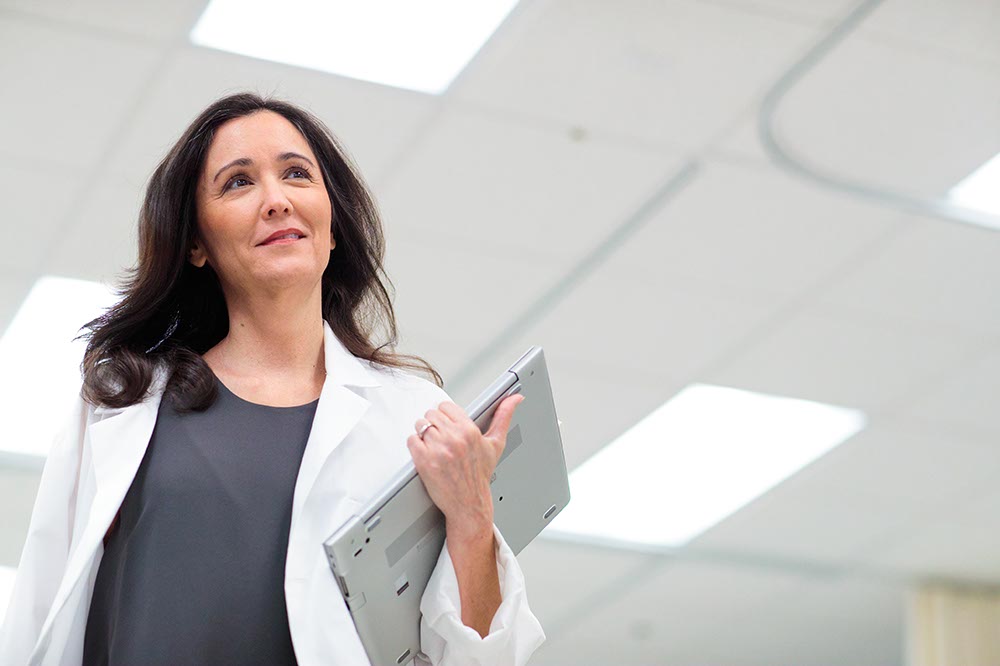

The World Health Organization designated 2020 as the International Year of the Nurse and Midwife. This designation occurred before any thoughts about a global pandemic. It was never anticipated that this would be a year that would showcase the knowledge, skills, dedication and courage of nurses.
Our nursing students and alumni are out there saving lives every day. At the University of St. Augustine for Health Sciences (USAHS), we’ve never been prouder of you—or more grateful for your heroism.
“Our School of Nursing students are working to balance the challenges of dealing with COVID-19 at their workplace and keeping themselves and their families safe with their investment in their advanced degree pursuit. We salute their ability to take on these challenges,” Program Director of Nursing Dr. Robin Dennison said.
Whether you’re treating patients, training frontline workers, or running a hospital or clinic—you are meeting an unprecedented public health crisis with bravery and strength. You’re helping not just individuals and their families, but all of us.
From our hearts to yours—thank you.
“While how we deliver care has changed profoundly over the past few months, the heart of the profession has never been more obvious,” Nursing Program Assistant Professor Dr. Amy Herrington said. “Nursing is a calling and not simply a profession. As nurses, we have accepted the call to serve because we deeply care about those in need. I want to thank each and every nurse for choosing to serve.”
Working Through COVID-19
Our nursing students are working in all different settings during this global pandemic – urgent care facilities, telehealth, hospitals, and educating future healthcare professionals. All of our lives have changed, but nurses are the ones on the front lines.
“COVID-19 will forever change the lives of people and myself. Currently, I am on assignment here in NYC, trying to help fight this pandemic with my fellow healthcare professionals. This experience has shown me how important teamwork really is while trying to save the lives of patients. From doctors, respiratory staff, nurses, environmental and administration all came together like never before.


Rashida Wallace, MSN-FNP Student
Working here in NYC during this pandemic has filled me with tremendous emotion. At 7 a.m. and 7 p.m. shift change every day; we hear the gratitude from New Yorkers clapping and cheering us on thanking us for what we are doing and appreciative that we can help. Hospitals changed from full-service facilities to complete ICUs on every floor. There was a lot of chaos, but everyone was eager to jump in and help. This experience was an emotional roller coaster for me. I worked in the OR at home and assisting with intubation is an everyday thing for me. But this was different. The fear you see in a person’s eyes as they clench your hand with all the strength they have left as they whisper to you “please don’t let me die” and you doing your best not to show your own fear because you have to be strong for them and yourself too. I can’t tell you how many times I broke down and cried. I cried for the patients. I cried for the families. I cried for myself. But it isn’t all sadness. Happiness and joy come to the entire healthcare team when we hear music over the loudspeaker because we know that someone somewhere in the hospital has been extubated. And we hear this music more and more every day.
I am glad I decided to show up and do my part. I will never forget this experience. Thankful for the opportunity to serve.” – Rashida Wallace, MSN-FNP Student
“Many things have changed during the COVID-19 pandemic. At first, we had our personal protection equipment (PPE) training and daily updates on how different procedures would be done. PPE supplies were inventoried daily and restricted for use. We went to a no visitor policy unless the patient was a minor. This change has been hard for patients and visitors. Masking for all staff and patients went into effect. It is hard to recognize your co-workers at times with masks, hair coverings, face shields and goggles. Working in a busy emergency department, you are always used to rushing in with critical patients to assist and treat them. However, with COVID-19 patients, we had to change our practice. Stop at the door and ask yourself, Do I need to be in the room? Do I have on the proper PPE? I need to pause and make sure I am safe before I go in to assess the patient. It has also brought together staff to collaborate and coordinate care, to figure out best practices and to learn from each other what works and what doesn’t. The outpouring from the community has been tremendous with their support with both food and PPE donations.” – Marni Farr, Graduate USAHS’ Inaugural MSN Cohort
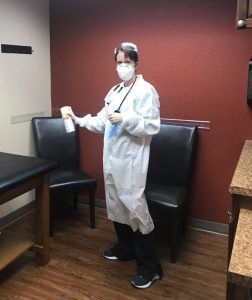

Leslie Guy, MSN- FNP Student
“I work in a small urgent care center. Our hours of operation have been cut in half as well as our nursing staff. I am now the sole nurse in the facility, along with a receptionist and an APN. We have gone from seeing 30-40 patients daily to around 5-6 give or take.” – Leslie Guy, MSN-FNP student
“The multi-hospital healthcare system in the North Texas area that I work in is well prepared to handle COVID-19 cases and a possible surge. ER, ICU, and designated units all have a unique workflow to manage potential and positive COVID-19 patients. One specific operational change is the system that created a labor pool and a Team Nursing strategy. The staff from units that are temporarily closed get to be part of the labor pool. The nurses from this pool go to the COVID-19 units and help the primary nurses and units as needed – thus helping the smooth function of hospitals with the Team Nursing approach,” – Viji George, DNP Student
“I’m not working directly in a hospital setting but teach BSN students in the clinical setting. I teach for West Coast University in Ontario, CA. WCU, like many other schools, we are presently not allowed in the hospital setting. My concern is whether or not my students’ clinical hours will be accepted this term. We have gone from the traditional clinical setting to an online “virtual clinical.” Here in California, we have gone from 75% clinical hours and 25% classroom hours to 50% and 50%. That being said, students have to perform 45 hours of direct patient care hours. They are being told to volunteer, which is complicated because so many organizations are closed. We, the faculty, were given a 15-minute PowerPoint presentation and a one-hour meeting Sunday on teaching/guiding our students in Telehealth Nursing, starting this week.” – Deborah Lewis, Graduate USAHS’ Inaugural MSN Cohort & Current DNP Student
“I work as a clinical application specialist. My primary care organization of 8 locations with over 100 providers has flipped to 85% telehealth. We have moved our entire call center and the medical records department have all transitioned to working from home. We have made great efforts to supply all staff with proper equipment or the ability to enable their personal devices with connectivity to our network. We are reaching out to our patients and keeping them informed with every avenue we have. We have had furloughs however it looks like some will be returning soon,” – Amy Pestow, MSN Student
“I teach at a large nursing program that is mostly undergraduate education with about 600 students. We have had to convert all didactic, clinical, lab, and simulation to an online environment. As a didactic teacher, it has been interesting, frustrating, joyful, and challenging to teach classes of 30 to 40 nursing students virtually doing live four-hour classes several days a week! I
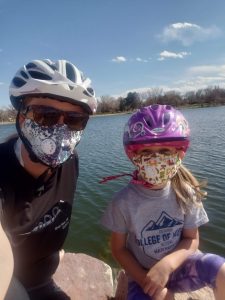

Tara Haskell, DNP Student
must talk to a computer screen to give the lecture, and this is without visual feedback from students, which I have come to realize is a big part of teaching in the classroom. My students are super resilient, though, and many are enjoying the online platform. I am thankful for their flexibility and desire to continue learning! My 6-year-old daughter LOVES coming in to say hi to my students and teach them something each day, which fits well since I am the pediatric instructor.” – Tara Haskell, DNP Student
Caring with Pride and Hope
Although the pandemic carries heavy emotions of fear and uncertainty, nurses continue to carry themselves with honor and hope. While their jobs put them at risk of danger from this virus, they take pride in their profession and continue forward because they not only see the worst of this virus, but the people that come out on the other side and the incredible support coming from across the nation.
“Thank you for choosing to serve and for your bravery when you know that you are risking your health and safety. Thank you for your selflessness when you know that this could lead to separation from your friends and family; for your compassion as you work to make sure that no one dies alone; for your intellect, as you provide your clinical and leadership expertise across this vast healthcare system each and every day; your grace as you hold the hand, wipe the tears, and pray for all of your patients and peers. Thank you for providing a voice for the patient and our profession. You were called to serve, and you graciously stepped up. Thank you for who you are and all that you do.” Dr. Herrington said.
